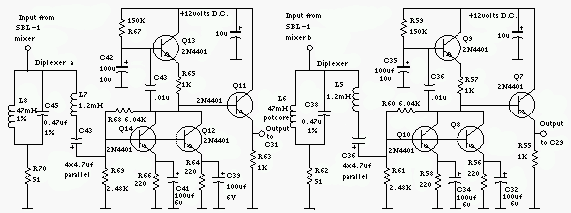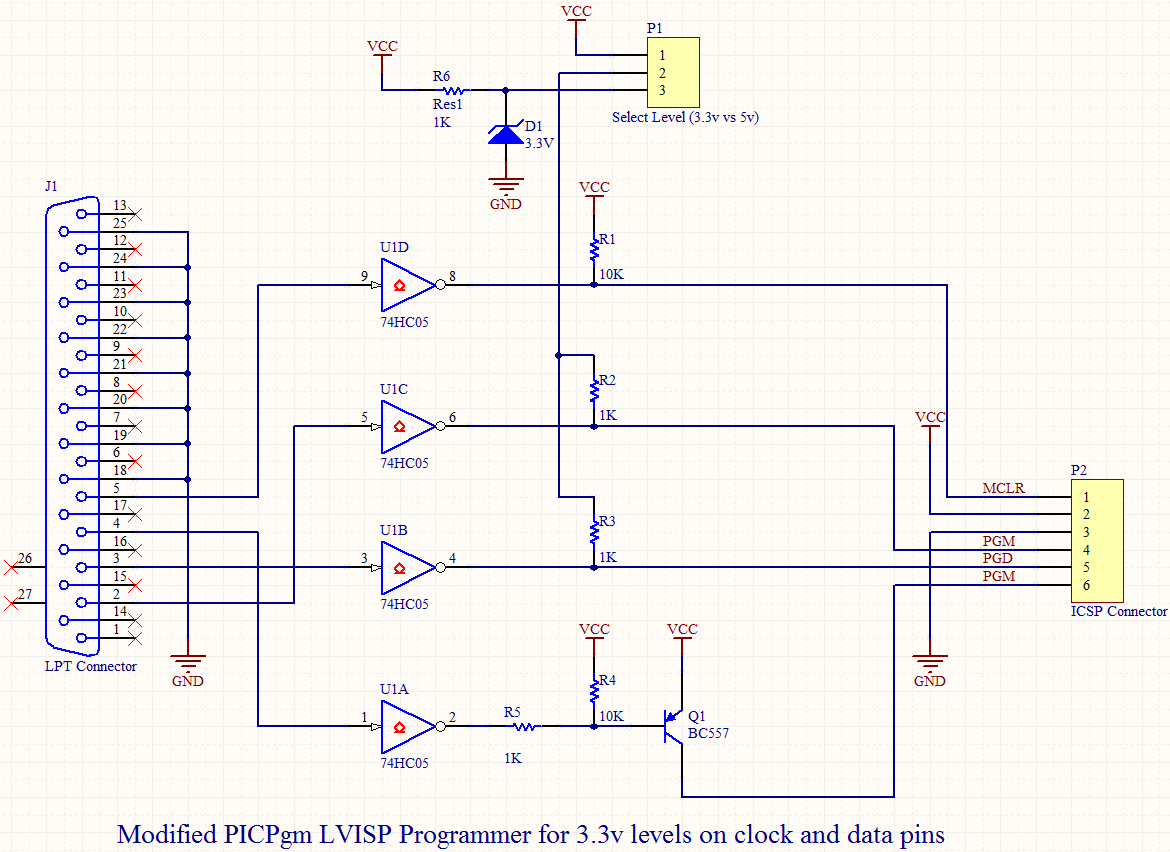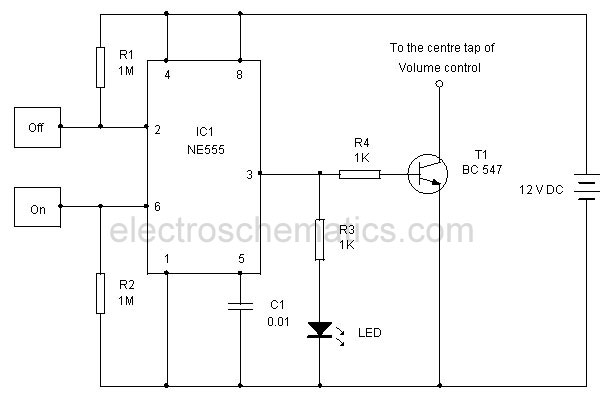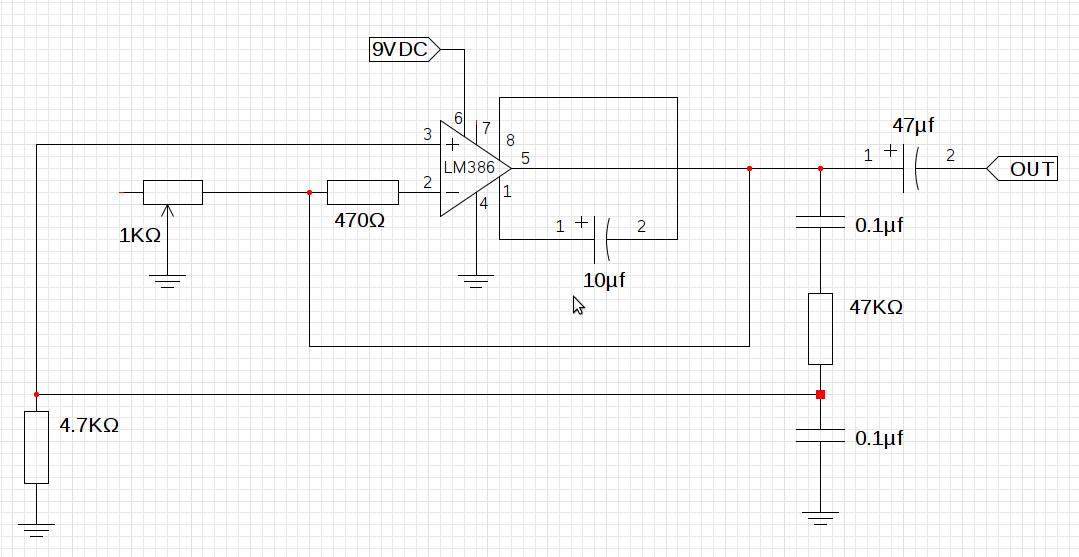
Closed loop power control with a single speed
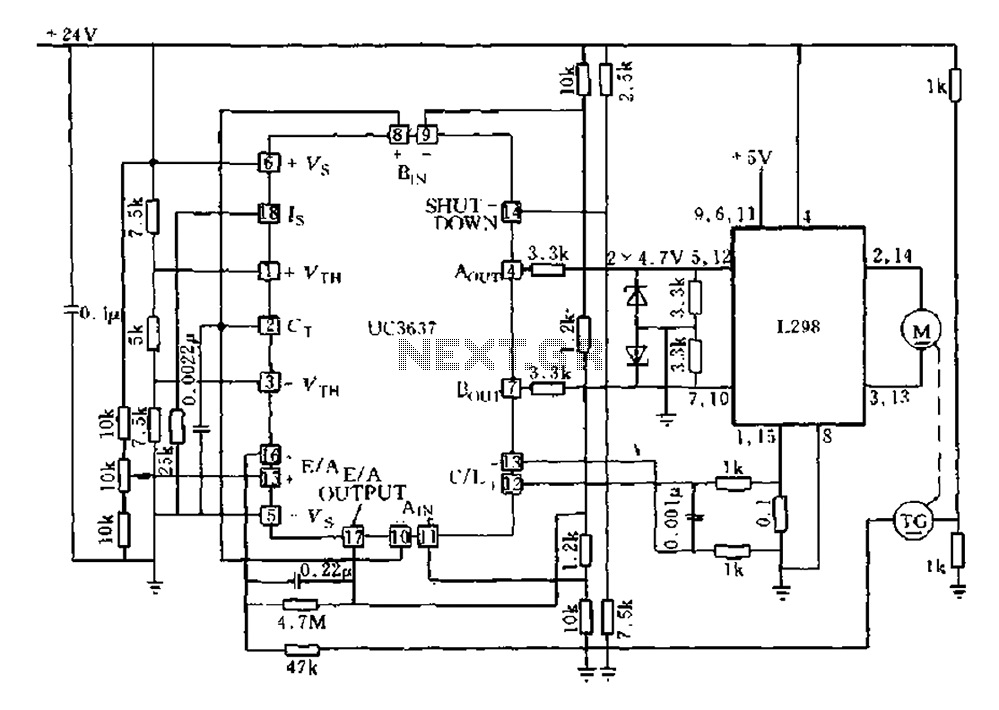
This is another example of a closed-loop speed control system. It utilizes a single voltage supply and an L298 integrated H-bridge power amplifier capable of handling 24V. Similar to the previous example, it is also suitable for two-way speed control.
The closed-loop speed control system described employs an L298 integrated H-bridge power amplifier, which allows for efficient control of DC motors by enabling bidirectional operation. The L298 is designed to drive motors with a voltage supply of up to 46V, making it suitable for various applications requiring high torque and speed.
In this configuration, the system typically includes a feedback mechanism, such as an encoder, which continuously monitors the speed of the motor. The encoder provides real-time data on the motor's actual speed, which is compared to the desired speed set by the user. This comparison generates an error signal that is processed by a controller, often a PID (Proportional-Integral-Derivative) controller, which adjusts the PWM (Pulse Width Modulation) signal sent to the L298.
The PWM signal controls the duty cycle, thus regulating the voltage and current supplied to the motor, allowing for precise speed adjustments. The H-bridge configuration of the L298 enables the motor to be driven in both forward and reverse directions, facilitating two-way speed control.
In summary, this closed-loop speed control system using the L298 H-bridge provides an effective solution for applications requiring variable speed and direction control of DC motors, ensuring high performance and reliability.Another example of Figure closed loop speed control. It is a single voltage supply and L298 with integrated H-bridge power amplifier (24V). Like the previous example, it is als o suitable for two-way speed control.
The closed-loop speed control system described employs an L298 integrated H-bridge power amplifier, which allows for efficient control of DC motors by enabling bidirectional operation. The L298 is designed to drive motors with a voltage supply of up to 46V, making it suitable for various applications requiring high torque and speed.
In this configuration, the system typically includes a feedback mechanism, such as an encoder, which continuously monitors the speed of the motor. The encoder provides real-time data on the motor's actual speed, which is compared to the desired speed set by the user. This comparison generates an error signal that is processed by a controller, often a PID (Proportional-Integral-Derivative) controller, which adjusts the PWM (Pulse Width Modulation) signal sent to the L298.
The PWM signal controls the duty cycle, thus regulating the voltage and current supplied to the motor, allowing for precise speed adjustments. The H-bridge configuration of the L298 enables the motor to be driven in both forward and reverse directions, facilitating two-way speed control.
In summary, this closed-loop speed control system using the L298 H-bridge provides an effective solution for applications requiring variable speed and direction control of DC motors, ensuring high performance and reliability.Another example of Figure closed loop speed control. It is a single voltage supply and L298 with integrated H-bridge power amplifier (24V). Like the previous example, it is als o suitable for two-way speed control.
